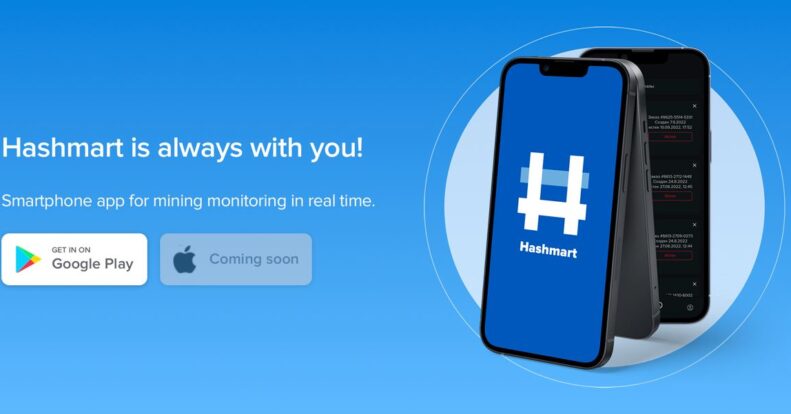What should the digital dollar be?

What should the digital dollar be?
The COVID-19 pandemic has been a real test for the worldwide healthcare system and economy, which has been severely damaged by quarantine measures in most countries. To help businesses and citizens, the US government approved an economic stimulus plan last year – the issuing of “free money”, essentially a reinforced printing of new dollars. Against this backdrop, the capitalization of the crypto market has skyrocketed, with many investors beginning to see it as an alternative to the traditional financial sector.
Even before the events of 2020, China began developing a central bank digital currency project (CBDC). It is a digital version of the national currency, the renminbi, which should soon take up most of the country’s financial flows. Naturally, the US is thinking of preparing a symmetrical response – the development of a digital dollar. Except that so far the government has no clear plan for the development of its own CBDC, that is, many experts are boldly speculating about what will actually be the digital version of the world’s most dominant currency. And this is what we have at the moment.
For centralization and privacy
In April 2020, Coin Center portal researchers Matthew Green and Peter Van Valkenburg published a paper entitled “Do We Really Need a Digital Dollar Without Privacy?” Its main message is that the U.S. CBDC should be given a proper degree of privacy, otherwise the project simply will not find popularity among the population. The main conclusion of the article: the digital dollar should resemble cash as much as possible so that any user can make anonymous transactions.
Among the key points of Green and Valkenburg’s work are several other important assumptions. The experts believe that the digital dollar will necessarily be centralized, with the central bank (the US Federal Reserve) remaining the ultimate authority in its architecture. That is, transfers to CBDC will be completely anonymous to both users and intermediary banks, but the Central Bank will have full control over the relevant information.
In some ways, the architecture of the U.S. CBDC will resemble the now canceled digital currency project Libra from Facebook, which has been rebranded and is now called Diem. Libra had a network infrastructure managed by known crypto-service providers, but the network could be used by anyone with a computer or a phone. As a reminder, Libra Association members were supposed to keep a register of transactions, while not controlling the transactions of the users themselves. In the case of the digital dollar the role of Libra “validators” could be taken over by the US Federal Reserve.
Logically, CBDC issuance would also be handled by the country’s central financial authority. The process would not differ much from the issuance of new paper dollars, that is, the government would retain the right to produce as many digital coins as needed for the current economic environment. This point is particularly important in the current context of rising inflation in the US.
Green and Valkenburg stressed that the digital dollar is not a panacea for the current economic downturn and other problems. Moreover, it carries with it new, as yet unknown, risks. If the authorities decide to launch a digital dollar, there is a chance that the financial system will become more convenient and faster, preserving that much of the privacy inherent in cash transactions. In addition, according to experts, a full transition to CBDC will not end well. Digital currency must coexist with paper money, otherwise, the US economy would be under the complete control of one centralized authority. In such a system, there will be no room for opposition or innovation in technical terms.
The Digital Dollar Project
The CBDC outlook is also being discussed at The Digital Dollar Project (DDP), a special initiative launched early last year by the Digital Dollar Foundation and Accenture. The project is led by former US Commodity Futures Trading Commission (CFTC) Chairman Christopher Giancarlo, head of Gattaca Horizons, and former CFTC Chief Innovation Officer Daniel Gorfine as well as a number of Accenture staff.
DDP members have their own version of what a digital dollar should really be. They have published the main points of their theory in a Whitepaper called the US CBDC Study. This paper looks at the two-tiered distribution system, the need for a tokenized dollar, and the potential opportunities and risks in its various applications. The main message of the researchers is that switching to a digital version of the national currency will make it more sustainable on the global stage and within the country itself.
So, the first point of the Whitepaper is that the digital dollar should become the third form of money in the US. This means that the CBDC will exist on a par with cash and non-cash transactions. That is, CBDC will not compete with banknotes for popularity, which will remove unwanted obstacles to the development of the project.
The second point is full compliance with the norms of financial regulators. According to experts, the digital dollar will not be a revolution in legal terms and will be regulated within the existing financial system. That is, it would be subject to regulations on combating the financing of crime, money laundering, and other illicit uses of financial flows.
The third point is high confidentiality. This is perhaps one of the most difficult concepts in the CBDC concept. The use of the digital dollar is supposed to guarantee citizens the confidentiality of their transactions, but at the same time information about their financial activities must be open to the main body of the banking system. The latter cannot be ignored, otherwise, CBDC would become another tool in the eyes of criminals. The Whitepaper does not yet have a solution to this problem – the researchers merely note that in the current situation the government may even have to make some additions to the already existing bills to regulate the economy.
Finally, the last important point of the Whitepaper is the need to develop and implement a series of pilot programs to test the digital dollar. CBDC was planned to be used in practice in some cities, i.e. paying benefits in digital currency, charging it to bank accounts, and so on. It was assumed that this phase of development may take several years, but it was expected to be launched in 2020.
More recently, in early May 2021, it happened – DDP announced the launch of five pilot projects to test the potential use of the US CBDC. The pilots, which Accenture, as well as a number of financial companies and public organizations, will provide funding for, are expected to explore, analyze and define the technical and functional capabilities of the digital dollar, assess development strengths and weaknesses, create test applications and identify potential uses of the digital currency for retail and wholesale trade.
Over the next two months, DDP will launch three pilot projects to use CBDC in different areas of the economy. The first test results of the digital dollar are expected to be published in the third quarter of 2021, with more information on the project to be published in early 2022. DDP members point out that building the infrastructure of the digital dollar is only possible with close cooperation between the authorities and the private sector. It is much more innovative, so technical issues are better left to the private sector. The state, on the other hand, is better placed to focus on regulating the future asset.
The digital dollar distribution model
A whitepaper published by the DDP has several opinions on the most efficient model for distributing the new digital currency to the US population. Experts agree that CBDC will be issued by the US Federal Reserve, after which tokens will go to commercial banks and financial service providers. They will distribute CBDCs directly to the public. In this case, the country’s existing financial system will not have to undergo any global reforms.
However, a second distribution model is also possible through the creation of FedAccount – direct federal accounts at the Fed. In this case, the digital currency would appear directly in Fed accounts, where end-users would have direct access to it. Proponents of FedAccount note that this would avoid the chain of intermediaries in the distribution of the new currency and make the whole process as efficient as possible.
However, this model has its disadvantages. For example, it highlights a major problem with the development of CBDC. If all participants in the process (individuals, financial institutions, and companies) can have direct access to the Fed’s accounts, in such a situation commercial banks could begin to compete with the country’s main financial authority. And this could already lead to global changes within the existing US financial system.
Conclusion
An electronic payment system run by the Fed would compete with existing payment applications such as PayPal, Venmo, Stripe, Visa and MasterCard. This would put these companies at a disadvantage. And since the Fed is part of the government, the CBR doesn’t even need to make a profit, so its payment services could be very cheap indeed, and even “killer” for the aforementioned payment systems, since they need to cooperate specifically with commercial banks.
In fact, since the digital dollars that people will hold in the Fed will be an alternative to holding currency in a current account, the Fed will also be competing with private banks and credit unions. In this way, the Fed could create its own distributed peer-to-peer payment and cash-holding system and make it much more efficient than Bitcoin. But by doing so, the Fed would be directly competing with much of the world’s existing financial and payment infrastructure. That may be a good thing, perhaps payments and cash storage are just so mature and commercial that there is now no reason for commercial companies to do it, and the government can safely use it. But it would actually be a nationalization of the industry, which is always a risky move.
You can learn even more about cryptocurrencies and mining on our portal Hashmart.io!







